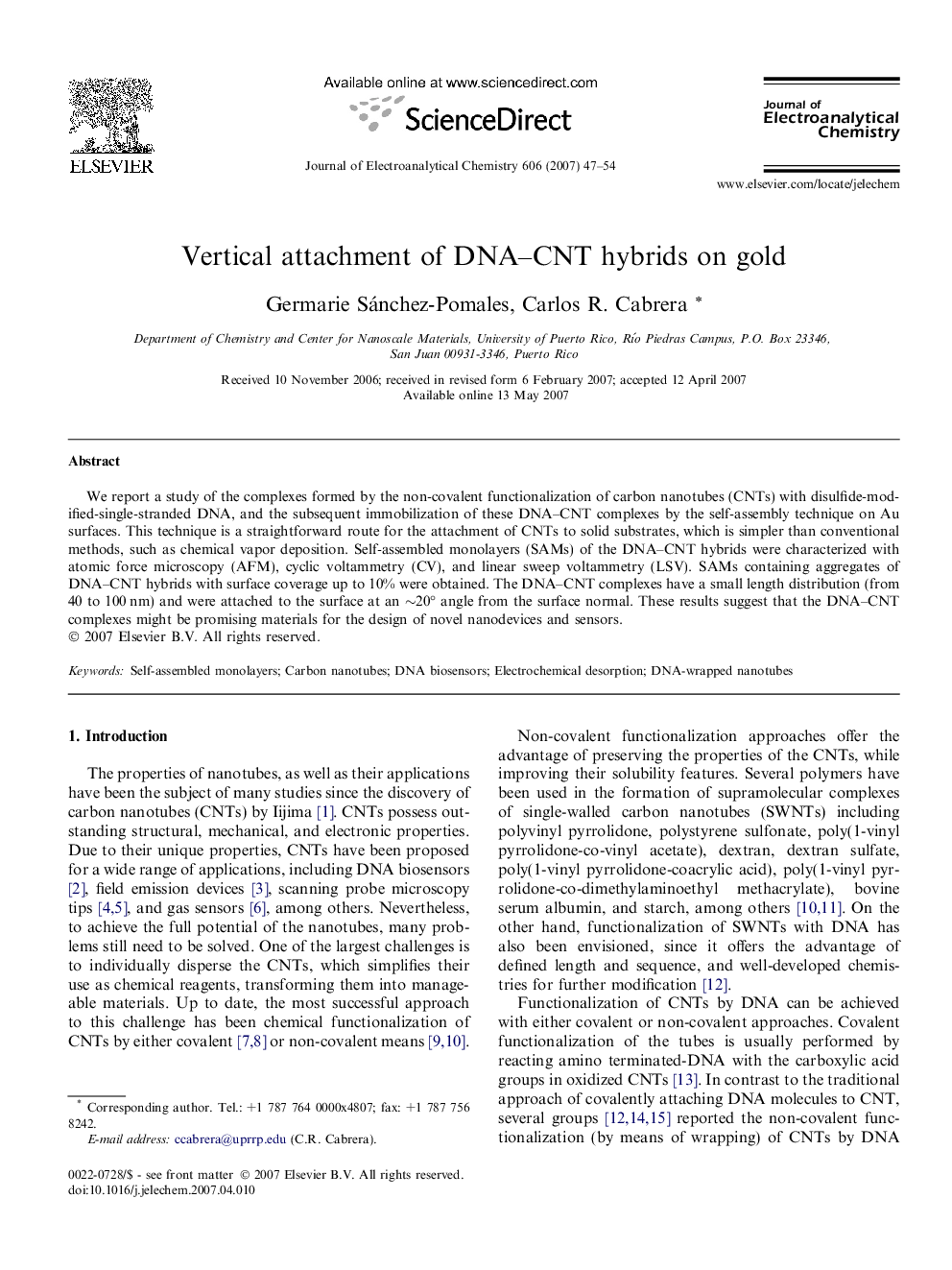| کد مقاله | کد نشریه | سال انتشار | مقاله انگلیسی | نسخه تمام متن |
|---|---|---|---|---|
| 221070 | 463369 | 2007 | 8 صفحه PDF | دانلود رایگان |

We report a study of the complexes formed by the non-covalent functionalization of carbon nanotubes (CNTs) with disulfide-modified-single-stranded DNA, and the subsequent immobilization of these DNA–CNT complexes by the self-assembly technique on Au surfaces. This technique is a straightforward route for the attachment of CNTs to solid substrates, which is simpler than conventional methods, such as chemical vapor deposition. Self-assembled monolayers (SAMs) of the DNA–CNT hybrids were characterized with atomic force microscopy (AFM), cyclic voltammetry (CV), and linear sweep voltammetry (LSV). SAMs containing aggregates of DNA–CNT hybrids with surface coverage up to 10% were obtained. The DNA–CNT complexes have a small length distribution (from 40 to 100 nm) and were attached to the surface at an ∼20° angle from the surface normal. These results suggest that the DNA–CNT complexes might be promising materials for the design of novel nanodevices and sensors.
Journal: Journal of Electroanalytical Chemistry - Volume 606, Issue 1, 1 August 2007, Pages 47–54